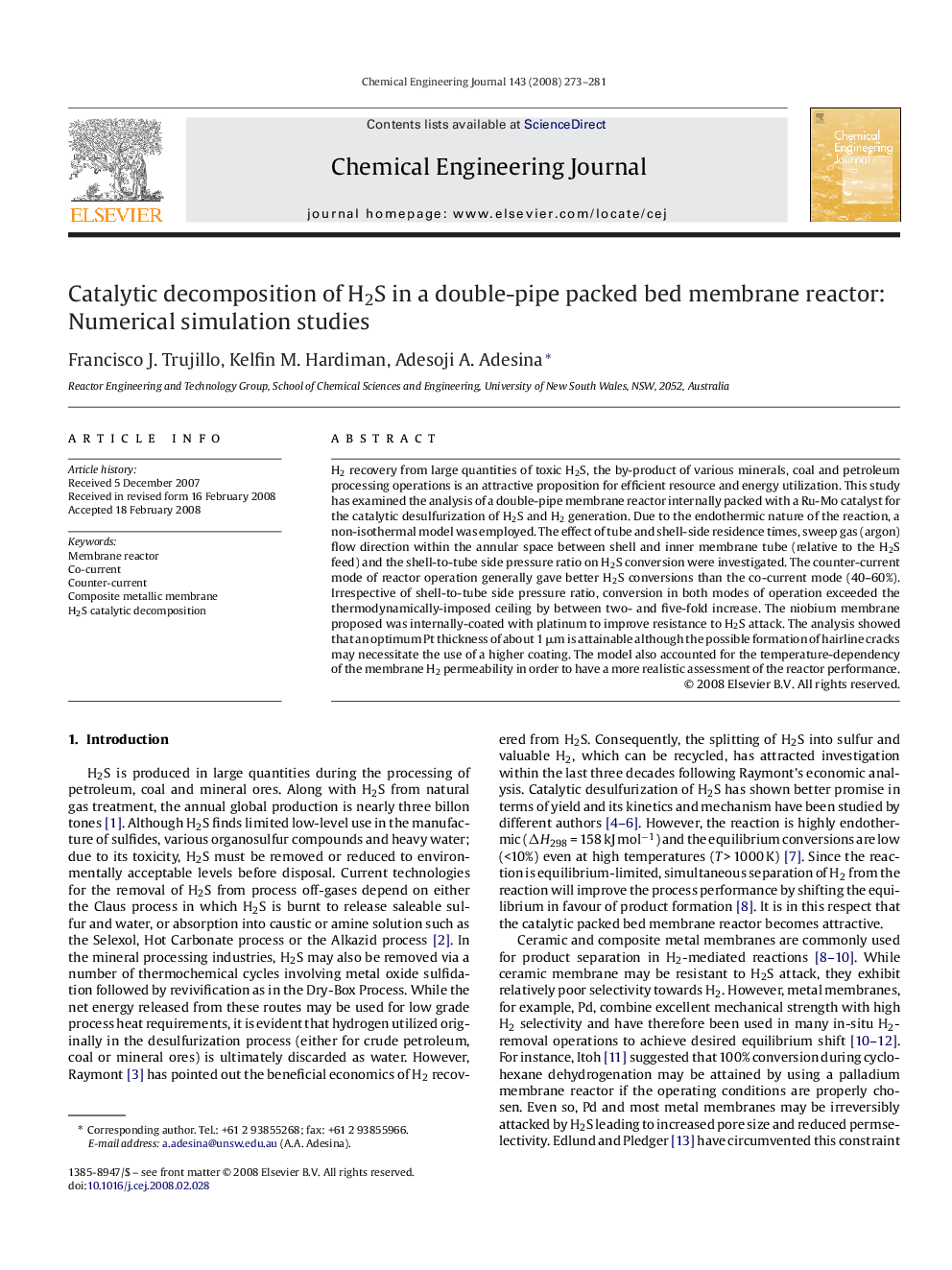| Article ID | Journal | Published Year | Pages | File Type |
|---|---|---|---|---|
| 152932 | Chemical Engineering Journal | 2008 | 9 Pages |
H2 recovery from large quantities of toxic H2S, the by-product of various minerals, coal and petroleum processing operations is an attractive proposition for efficient resource and energy utilization. This study has examined the analysis of a double-pipe membrane reactor internally packed with a Ru-Mo catalyst for the catalytic desulfurization of H2S and H2 generation. Due to the endothermic nature of the reaction, a non-isothermal model was employed. The effect of tube and shell-side residence times, sweep gas (argon) flow direction within the annular space between shell and inner membrane tube (relative to the H2S feed) and the shell-to-tube side pressure ratio on H2S conversion were investigated. The counter-current mode of reactor operation generally gave better H2S conversions than the co-current mode (40–60%). Irrespective of shell-to-tube side pressure ratio, conversion in both modes of operation exceeded the thermodynamically-imposed ceiling by between two- and five-fold increase. The niobium membrane proposed was internally-coated with platinum to improve resistance to H2S attack. The analysis showed that an optimum Pt thickness of about 1 μm is attainable although the possible formation of hairline cracks may necessitate the use of a higher coating. The model also accounted for the temperature-dependency of the membrane H2 permeability in order to have a more realistic assessment of the reactor performance.
